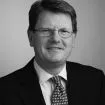- within Compliance topic(s)
- with Inhouse Counsel
A second Code of Guidance on expert evidence was published in December 2001, designed to assist lawyers and expert witnesses instructed in relation to litigation. This Code was published by a Working Party set up by the Head of Civil Justice and approved by the Expert Witness Institute. It was pre-empted by a rival Code published by the Academy of Experts in 1999. There are now two competing Codes which causes some confusion, rather than comfort, to experts and lawyers whom they were intended to assist.
One of Lord Woolf’s concerns in his review of Access to Justice was the delay and expense caused by expert witness evidence. Part 35 of the Civil Procedure Rules (CPR) seeks to address this by restricting expert evidence, encouraging the use of single joint experts, and introducing measures designed to narrow the issues remaining at trial. Part 35 also provides rules in relation to how experts are to be instructed, the key elements that should be contained in their reports and other procedural matters including the conduct of so-called "without prejudice" meetings between both parties’ expert witnesses.
Part 35 has proved to be one of the more contentious sections of the procedural rules, generating pre-trial applications to court to determine its meaning and a need arose for clarification of the procedure. The Working Party and the Academy of Experts subsequently produced their Codes. (The Academy claimed that comments it made on the Working Party’s draft Code in 1999 had been "largely ignored" and therefore produced its own Code.)
The Academy of Experts’ Code (published in December 1999 and revised and republished in June 2001) has been cited positively in a number of judgments, including the following:
- Smith v. Stevens (Unreported, QBD, 26 January 2001) in which the Court "followed" the Academy of Experts’ Code of Guidance in refusing to allow a single joint expert to have a conference with one side alone.
- P v. Mid Kent Healthcare NHS Trust [2002] 1 WLR 210 (Court of Appeal) in which Lord Woolf described the Academy’s Code as a "helpful protocol" which "admirably summarises the position". Lord Justice Simon Brown noted that "the one document … which specifically addresses the point is the Code of Guidance … published by the Academy of Experts". Quoting from the Code, Lord Justice Simon Brown noted that "the good sense of this is surely plain".
The result of having the two Codes in existence is that lawyers and experts must decide whether to consult either or both of the Codes in the conduct of their litigation. Both Codes are, not surprisingly, largely based on Part 35. The Academy’s Code contains more guidance and explanatory commentary then the Working Party’s Code but is still largely comprised of repeating the procedure contained in Part 35 and its supporting Practice Direction. In addition, they both incorporate extracts from other published material such as the provisions pertaining to expert witnesses in the Admiralty and Commercial Courts Guide, the Queen’s Bench Guide and the Chancery Guide.
One difference is that the Working Party’s Code states that lawyers will not normally be present at discussions between experts, whereas the Academy’s Code states that they will not be present (unless all the parties and their experts agree or the court orders). This difference in emphasis may mean there is a tactical significance as to which Code is being used if the parties or their experts are debating whether or not to allow their lawyers to be present at discussions.
Lawyers and expert witnesses are now going to have four sources of guidance, in that they will have to take heed of both Codes of Guidance, as well as CPR 35 and the relevant High Court Guide. This may well lead to increased costs and increased scope for disputes between parties. It is hoped that by the time the next revision of each of the Codes is due to be published that the Academy and the Expert Witness Institute will be able to agree to produce a single Code.
© Herbert Smith 2002
The content of this article does not constitute legal advice and should not be relied on as such. Specific advice should be sought about your specific circumstances.
For more information on this or other Herbert Smith publications, please email us.


